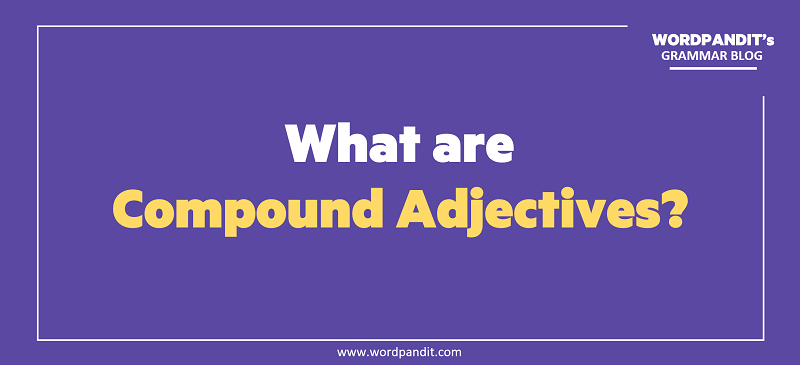Before we begin with compound adjectives, let us have a look at the definition of an adjective:
Adjectives are describing words. They are used with nouns to describe or point out, the person, animal, place or thing which the noun names or tell the number or quantity. For example: Black, honest, beautiful, clever.
A single adjective made up of two or more words is called a compound adjective. A compound adjective is formed when two or more adjectives are joined together to modify the same noun. The words in a compound adjective can be linked together by a hyphen (or hyphens) to show they are part of the same adjective. Words like densely-populated are compound adjectives and they are made up of two or more words, normally with hyphens between them. Something that is dense contains a lot of things or people in a small area. Thus, a densely-populated town or city is one with a high population count within the city boundaries.
Examples: cold-blooded, kind-hearted, old-fashioned, open-minded, deeply-rooted,well-behaved
Use of Hyphen With respect to Compound Adjectives:
In British English, the use of hyphen is common.
The Americans rule says: Use hyphen if it avoids confusion or brings clarity, else don’t.
The Hyphen Might Be Essential
The use of hyphen may be essential at times to avoid ambiguity. For example:
- a heavy-metal drill
- a heavy metal drill
Both are correct, but they have different meanings. The first device drills heavy metals. The second one drills metals and is heavy. If we’re talking about a device that drills heavy metals, then putting heavy metal drill would be wrong. So the use of hyphen may change the meaning of compound adjectives at times.
Compound Adjectives with Numbers
The most common compound adjectives are the ones which include numbers. For example:
- 6 –page document
- 2-year-old cat
- 2-bedroom house
- Four-foot table
BEWARE:
More than one adjective or a compound adjective?
It is important to note that all adjectives are not connected by hyphens. It is common to use more than one adjective to describe something. Using 2 or more adjectives to describe one thing is called ‘enumeration of adjectives’.
- A small red button (2 adjectives : ‘’small ‘’ and ‘’red’’)
- He is a smart talented boy (2 adjectives: ‘’smart’’ and ‘’talented’’)
ADVERBS WITH ADJECTIVES:
Adjectives are often preceded by adverbs like very, well, beautifully, extremely, etc and usually there is no need to use hyphens to link adverb to an adjective. No hyphen is required because it is already clear that the adverb modifies the adjective rather than the subsequent noun
For Example:
Rahul is a very talented boy
(As “very” is an adverb, it should not be linked to the adjective “talented” with a hyphen.)
Linking an adverb like very, most or least to an adjective with a hyphen is an uncommon error. However, when an adverb ends in ‘ly’ (like beautifully, wonderfully, extremely), you may feel the urge to link it to the adjective with a hyphen but actually there is no need.
For example:
It was a beautifully decorated house
(The adverb “beautifully” modifies the adjective “decorated”, but there is no need to join the two with a hyphen.)
GRAMMAR TOOL TIP:
How to spot a Compound Adjective:
To check whether it is a compound adjective or several adjectives, Put ‘and’ between the adjectives. If there is no loss of meaning, it is a case of several adjectives and not compound adjectives.
For Example:
- Foolish Old Crow – Foolish and Old Crow –As there is no change in the meaning by putting and between the two adjectives, it is a case of several adjectives; so no hyphen required.
- Fifteen minute presentation – Fifteen and minute presentation –As there is change in the meaning by putting and between the adjectives, it is a case of compound adjective and hyphen is a must











